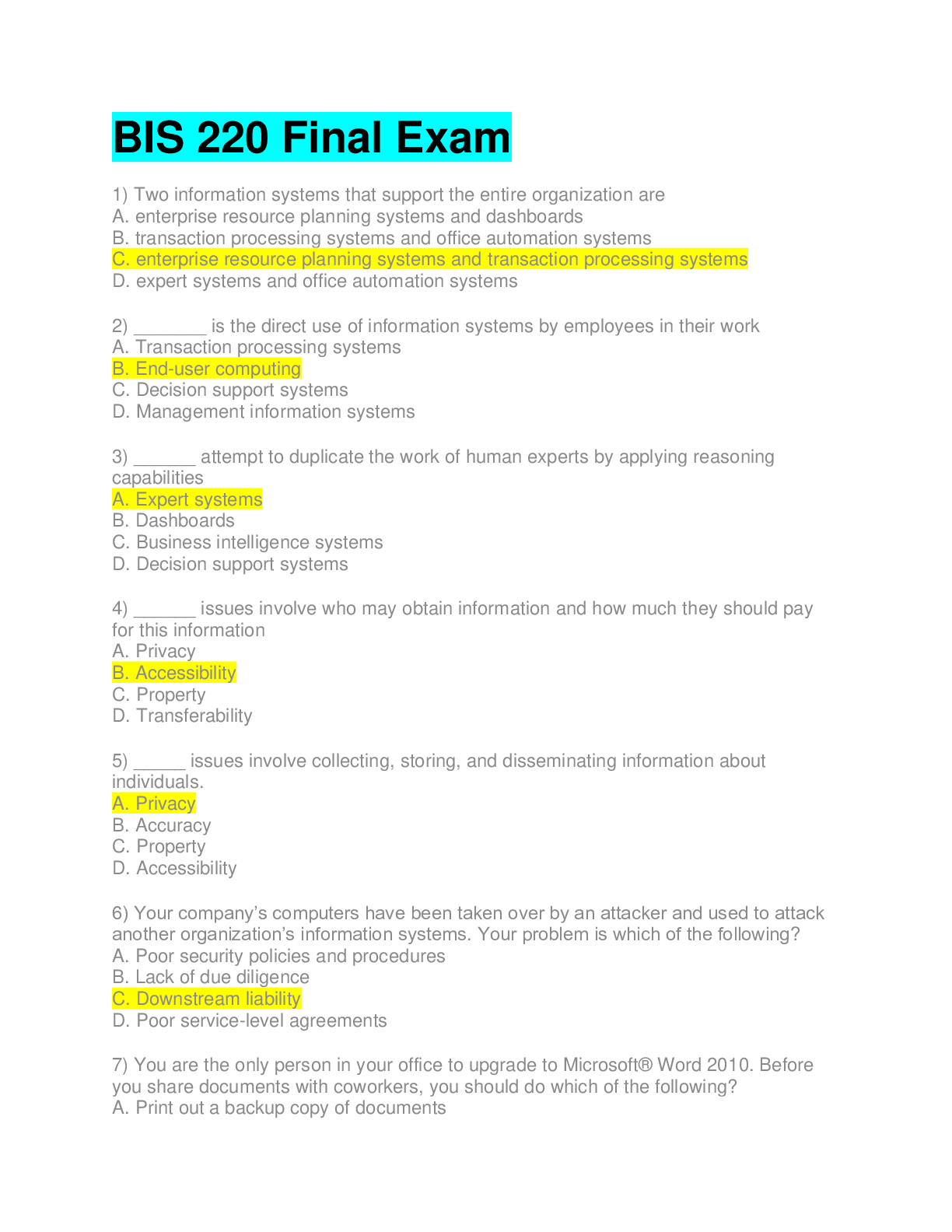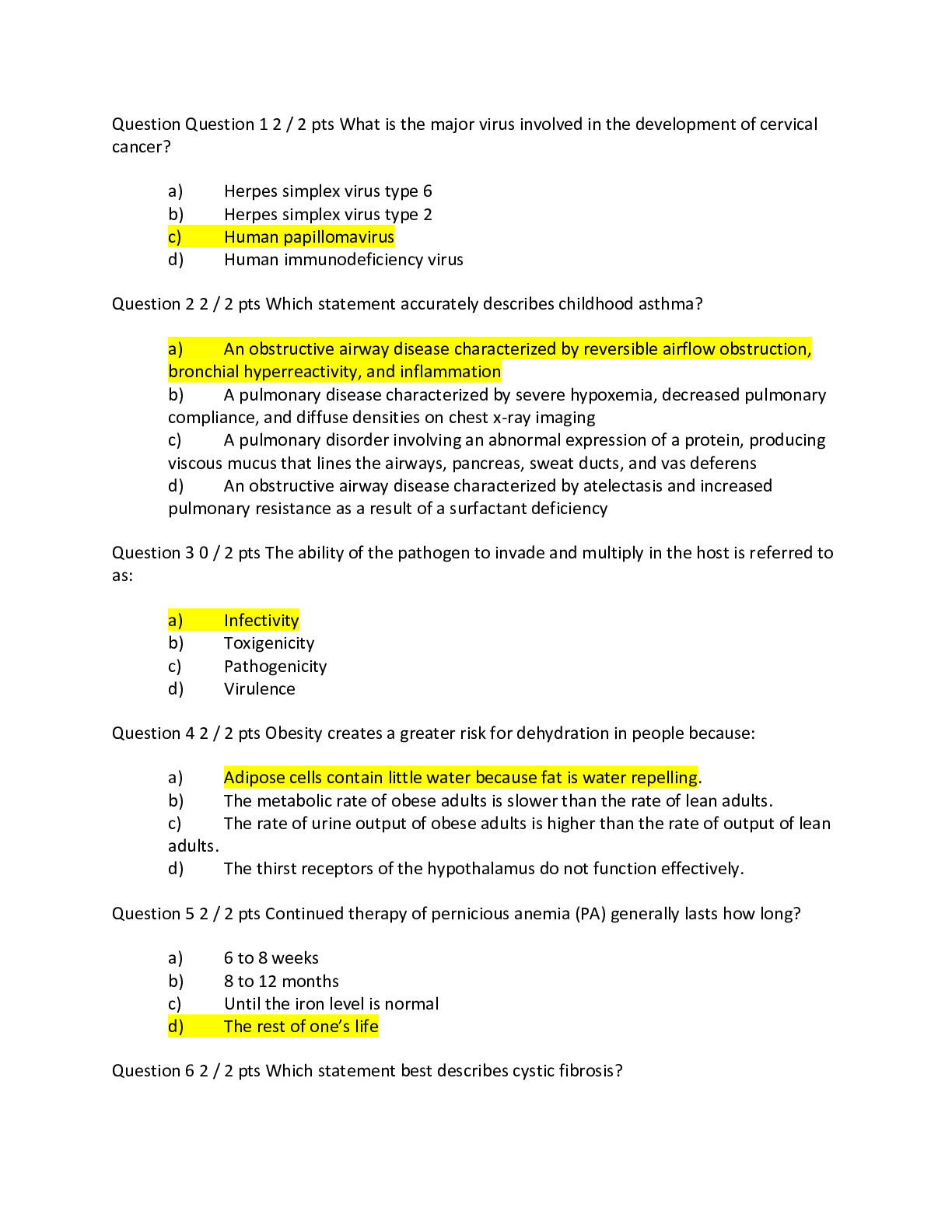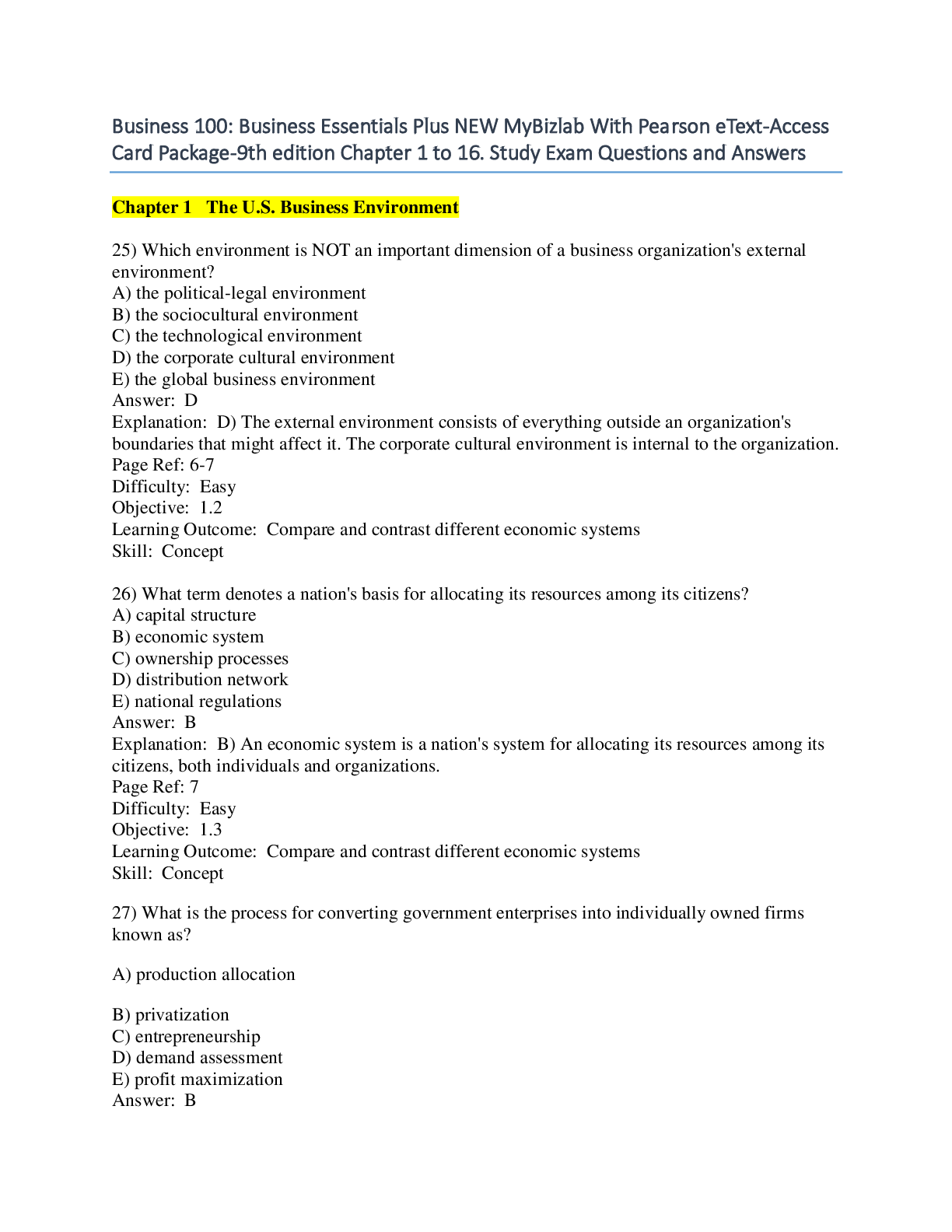Anatomy > QUESTIONS & ANSWERS > Portage Learning Anatomy & Physiology 2: Module 3 Exam Questions and answers, rated A+ (All)
Portage Learning Anatomy & Physiology 2: Module 3 Exam Questions and answers, rated A+
Document Content and Description Below
Portage Learning Anatomy & Physiology 2: Module 3 Exam Questions and answers, rated A+ What sense does not have specialized sense organs? - ✔✔A. Smell B. Correct! Touch C. Equilibrium D.... A&C The posterior portion of the outer fibrous layer of the eye is called the _____. - ✔✔Sclera What portion of the eye supplies blood supply to the other layers of the eye? - ✔✔Choroid (of the middle layer) True or false: The more numerous type of photoreceptors are rods. - ✔✔True What is the correct order of how light passes through the eye? - ✔✔A. Cornea, Lens, pupil, retina B. Correct! Cornea, lens, vitreous fluid, retina Vitreous fluid fills the space posterior to the lens C. Lens, retina, cornea, optic nerve D. Lens, vitreous fluid, optic nerve, retina A patient had a CVA in the area indicated by the red x in the figure, below. What type of blindness is the patient most likely to incur? Explain your reasoning. - ✔✔Bilateral left visual field blindness The right optic tract is damaged. All the sensory information from the left visual fields travels together after the optic chiasm to the right side of the brain. A patient has a brain tumor in the area indicated by the red x in the figure, below. What type of blindness is the patient most likely to incur? Explain your reasoning. - ✔✔Left eye blindness Left eye blindness because there is damage to the left optic nerve. Information from the left visual field has not yet crossed at the optic chiasm. Both peripheral and nasal fields of the left eye would be missing. True or False: All sensory information from the optic nerves cross at the optic chiasm. - ✔✔False only medial fibers cross at optic chiasm The ________ is controlled by the trochlear nerve. - ✔✔A. Superior rectus B. Medial rectus C. Lateral rectus D. Correct! Superior oblique Your elderly patient is discussing her vision problems. She describes her vision as blurry. Following a visual examination, her left eye deviates medially when looking straight ahead. What is most likely causing the vision problem? Explain your reasoning. A. CataractsB. Abducens nerve damageC. Brain tumor in the occipital lobeD. Medial rectus damageE. Superior rectus damage - ✔✔B The abducens nerve controls the lateral rectus. Damage to the lateral rectus would cause there to be a muscle imbalance, and the medial rectus would pull the eye medially when looking straight ahead, causing blurry vision. (Diplopia) Match the numbers (1-5) in the figure below with the correct terms (A-H). Note: not all terms will be used. 1- A: Scala Tympani 2- B: Facial Nerve [Show More]
Last updated: 3 years ago
Preview 1 out of 5 pages

Buy this document to get the full access instantly
Instant Download Access after purchase
Buy NowInstant download
We Accept:

Reviews( 0 )
$8.00
Can't find what you want? Try our AI powered Search
Document information
Connected school, study & course
About the document
Uploaded On
Aug 19, 2022
Number of pages
5
Written in
Seller

Reviews Received
Additional information
This document has been written for:
Uploaded
Aug 19, 2022
Downloads
0
Views
142

























